Activation of the p53-MDM4 regulatory axis defines the anti-tumour response to PRMT5 inhibition through its role in regulating cellular splicing
- PMID: 29946150
- PMCID: PMC6018746
- DOI: 10.1038/s41598-018-28002-y
Activation of the p53-MDM4 regulatory axis defines the anti-tumour response to PRMT5 inhibition through its role in regulating cellular splicing
Abstract
Evasion of the potent tumour suppressor activity of p53 is one of the hurdles that must be overcome for cancer cells to escape normal regulation of cellular proliferation and survival. In addition to frequent loss of function mutations, p53 wild-type activity can also be suppressed post-translationally through several mechanisms, including the activity of PRMT5. Here we describe broad anti-proliferative activity of potent, selective, reversible inhibitors of protein arginine methyltransferase 5 (PRMT5) including GSK3326595 in human cancer cell lines representing both hematologic and solid malignancies. Interestingly, PRMT5 inhibition activates the p53 pathway via the induction of alternative splicing of MDM4. The MDM4 isoform switch and subsequent p53 activation are critical determinants of the response to PRMT5 inhibition suggesting that the integrity of the p53-MDM4 regulatory axis defines a subset of patients that could benefit from treatment with GSK3326595.
Conflict of interest statement
SVG, WAK, CT, MBP, X-PZ, RMdO, BL, MM, CC, NJ, RK, OB are past or present employees and stakeholders of GlaxoSmithKline. EP, KD, AB, and CM are past or present employees and stakeholders of Epizyme.
Figures

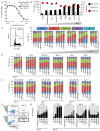
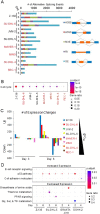
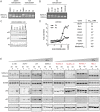
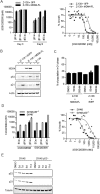
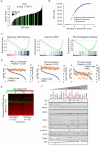

Similar articles
-
Regulation of PRMT5-MDM4 axis is critical in the response to CDK4/6 inhibitors in melanoma.Proc Natl Acad Sci U S A. 2019 Sep 3;116(36):17990-18000. doi: 10.1073/pnas.1901323116. Epub 2019 Aug 22. Proc Natl Acad Sci U S A. 2019. PMID: 31439820 Free PMC article.
-
Regulation of constitutive and alternative splicing by PRMT5 reveals a role for Mdm4 pre-mRNA in sensing defects in the spliceosomal machinery.Genes Dev. 2013 Sep 1;27(17):1903-16. doi: 10.1101/gad.219899.113. Genes Dev. 2013. PMID: 24013503 Free PMC article.
-
Deletion of RBMX RGG/RG motif in Shashi-XLID syndrome leads to aberrant p53 activation and neuronal differentiation defects.Cell Rep. 2021 Jul 13;36(2):109337. doi: 10.1016/j.celrep.2021.109337. Cell Rep. 2021. PMID: 34260915
-
Nucleoside protein arginine methyltransferase 5 (PRMT5) inhibitors.Bioorg Med Chem Lett. 2019 Jun 1;29(11):1264-1269. doi: 10.1016/j.bmcl.2019.03.042. Epub 2019 Mar 27. Bioorg Med Chem Lett. 2019. PMID: 30956011 Review.
-
Puzzling over MDM4-p53 network.Int J Biochem Cell Biol. 2010 Jul;42(7):1080-3. doi: 10.1016/j.biocel.2010.04.010. Epub 2010 Apr 22. Int J Biochem Cell Biol. 2010. PMID: 20417304 Review.
Cited by
-
PRMT5-mediated arginine methylation activates AKT kinase to govern tumorigenesis.Nat Commun. 2021 Jun 8;12(1):3444. doi: 10.1038/s41467-021-23833-2. Nat Commun. 2021. PMID: 34103528 Free PMC article.
-
Protein arginine methyltransferases: promising targets for cancer therapy.Exp Mol Med. 2021 May;53(5):788-808. doi: 10.1038/s12276-021-00613-y. Epub 2021 May 18. Exp Mol Med. 2021. PMID: 34006904 Free PMC article. Review.
-
Arginine methylation of the DDX5 helicase RGG/RG motif by PRMT5 regulates resolution of RNA:DNA hybrids.EMBO J. 2019 Aug 1;38(15):e100986. doi: 10.15252/embj.2018100986. Epub 2019 Jun 21. EMBO J. 2019. PMID: 31267554 Free PMC article.
-
Resistance to PRMT5-targeted therapy in mantle cell lymphoma.Blood Adv. 2024 Jan 9;8(1):150-163. doi: 10.1182/bloodadvances.2023010554. Blood Adv. 2024. PMID: 37782774 Free PMC article.
-
Epigenetic polypharmacology: A new frontier for epi-drug discovery.Med Res Rev. 2020 Jan;40(1):190-244. doi: 10.1002/med.21600. Epub 2019 Jun 20. Med Res Rev. 2020. PMID: 31218726 Free PMC article. Review.
References
MeSH terms
Substances
LinkOut - more resources
Full Text Sources
Other Literature Sources
Molecular Biology Databases
Research Materials
Miscellaneous

